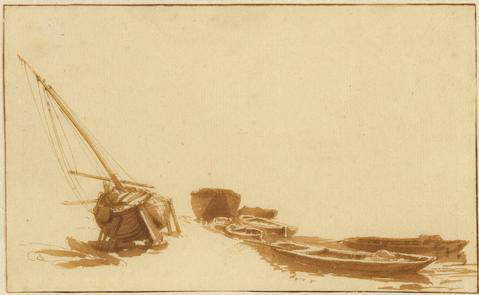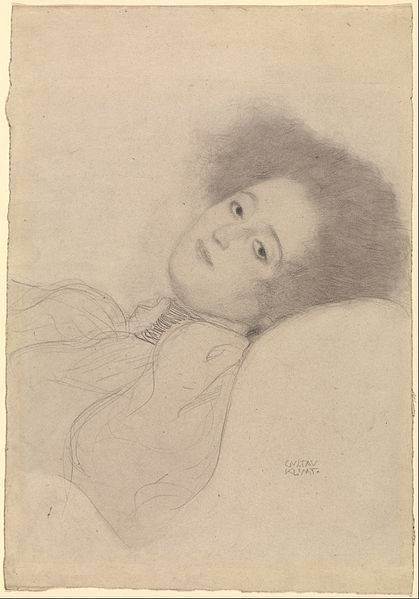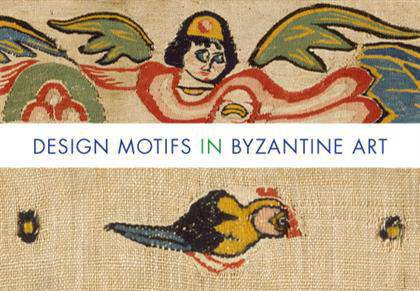
Jan de Bisschop (Dutch, 1628–1671)
Study of a Weyschuit on the Shore and Some Rowing Boats in the Water
1648–1652
Pen and brown ink and wash; brown ink framing lines.
The J. Paul Getty Museum, Los Angeles.

Gustav Klimt (Austrian, 1862–1918)
Portrait of a Young Woman Reclining (1897–1898)
The J. Paul Getty Museum, Los Angeles.
The Poetry of Paper – J. Paul Getty Museum Exhibition at the Getty Museum explores concept of negative space in drawings by Rembrandt, Fragonard, Seurat, and many others. July 23 – October 20, 2013.]]>
Source: Getty Museum
When looking at drawings, one generally focuses on what’s there: the figures, landscape, buildings, and other objects in the work. “The Poetry of Paper”, however, focuses on what’s NOT there —the artists’ use of negative space, described as areas of paper left blank to create the illusion of light and form.
Featuring works primarily from the Getty Museum’s permanent collection, “The Poetry of Paper” contains 33 drawings by accomplished masters that span six centuries.
“Exhibitions like ‘The Poetry of Paper’, which focus on a particular medium, provide an excellent vehicle for understanding artistic technique,” explains Timothy Potts, director of the J. Paul Getty Museum. “Our attention is automatically drawn to what an artist has drawn or painted, but sometimes it is what they have chosen not to depict that is equally important in achieving the desired effect. The exhibition explores the significance of what is not there with sometimes surprising results.”
When drawing the figure, artists frequently used negative space to suggest form, trusting the viewers’ imagination to fill in the void. For example, in Gustav Klimt’s “Portrait of a Young Woman Reclining” (1897–1898), her head rests on a swath of blank space, which through precise, minimal chalk marks can be read as a pillow.
In addition to figure and architectural studies, artists were also inspired by the world around them, and strove to mirror what they witnessed in nature. By juxtaposing untouched areas of white paper with various colors of wash, they could suggest puffy white clouds on a sunny day or clouds that warn of an oncoming storm. Jan de Bisschop’s “Boats on Shore in Water” (1648–1652) is a masterful example of this technique, using expanses of white paper to denote the shore, sky and sea.
Related content
The Getty Museum presents ‘In Focus: Ed Ruscha’ (exhibition, 2013)
Follow us on:


